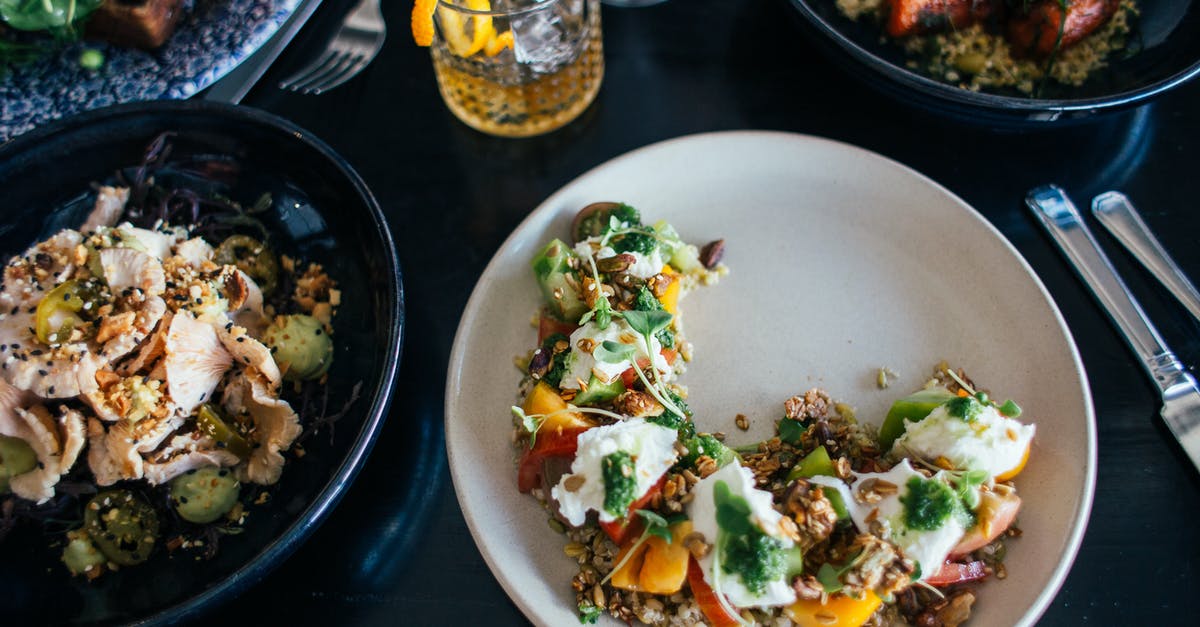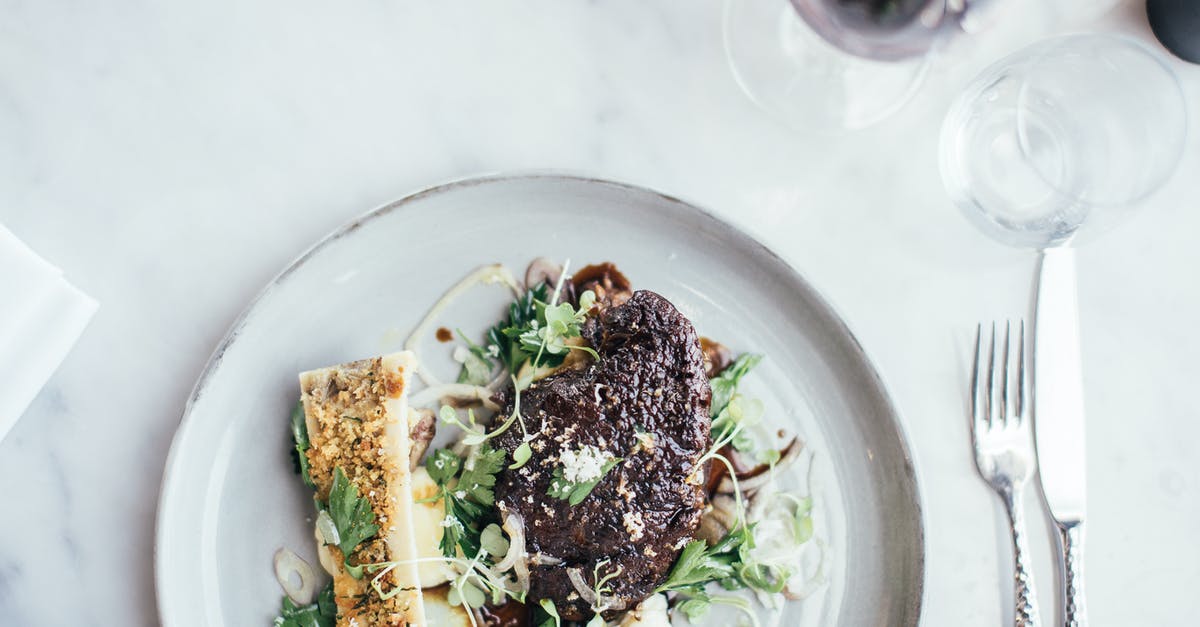How to reproduce meat flavor

Recently I have become a vegetarian.
I have always loved hamburgers, but the taste of vegetarian hamburgers isn't anywhewre close. I would like to know if there is any way to reproduce the flavor of meat, using no meat in the process.
Best Answer
I am definitely not a vegetarian, but I do love vegetables. The flavor of meat cannot be reduplicated by vegetables, but there are definitely certain things you can do to help.
Smoke Seasoning Two common varieties are liquid and powdered. Usually, when I think hamburger, I think char-grilled. Liquid smoke can be incorporated with certain things to enhance the flavor. I suggest to use liquid smoke sparingly as it is quite concentrated. Also, grill seasonings often contain smokey elements of flavor.. for example, mesquite seasoning and a plethora of other of other grill like seasonings are very common in your traditional American grocery store spice aisles (including liquid smoke). Alternatively, grilling your veggies and using good wood (mesquite, hickory, etc.) will impart a nice flavor.
Veggies and vegetable products Of course, with any non-meat entree choices, it may be hard to feel 'full' after eating a meal. I'd recommend vegetables with a relatively high protein content to offset this. Garbanzo Beans (chick peas), and really any derivative of a bean are good choices. If you can acquire a taste for tofu, it is an excellent medium of absorbing flavors. Zucchini, asparagus, string beans are also great additions to any vegetarian meal.
Texture When I think of something meaty without the meat, go with fungus! Mushrooms are excellent options, provided you have a taste for them. I sometimes make sandwiches with thick cut slices of portabello mushrooms that are stir fried with a savory sauce. Mushrooms provide a meaty/chewy consistency and are also great conduits of absorbing flavors. There's always much room for mushroom in my cooking repotoire!
Dairy Provided you are not going "vegan", using cheese as you would with meat is excellent in providing that extra "oomph", especially in sandwiches. I do not know many people who dislike a grilled cheese with tomato soup. Mozarella paired with basil, tomato, and other herbs is also great on sandwiches. Also, think of mac & cheese and alfredo sauces for pastas. Throw in some versatile veggies you like and you have a full meal right there.
I'm not opposed to vegetarians, but I do feel that meat has played a huge part in the evolution of the human species. I believe it is your freedom to choose whatever you want to eat. In the end, my advice is to really expand your horizons for flavor and adapt to all the wonderful veggies this world has to offer. Indian, Middle Eastern, and Asian cuisines usually have great choices for vegetarian options. Also, if you are philosophically okay with being a pescatarian, seafood options are plentiful.
Pictures about "How to reproduce meat flavor"



How to Recreate the Flavour of Meat | Earth Lab
More answers regarding how to reproduce meat flavor
Answer 2
You cannot. Meat tastes "like" meat because it is meat. What you are sensing through taste is the physical and chemical structure of the stuff you're eating. It is absolutely impossible to replicate meat without it being meat.
The best you can do is to go through the questions Joe linked and use the suggestions from them to get food which tastes umami. It is a taste most people get to know through meat. Nobody will mistake your food for meat just because it's umami, but you might find that a non-meat umami taste is good enough for you. But if you really need the taste of meat, then you have to give up vegetarianism.
Answer 3
Contrary to what others might tell you, you can, at least partially, replicate characteristics that make meat taste "meaty." There are specific chemical compounds that create this flavor profile. The question is can you find vegetable sources where those compounds are in abundance, but don't otherwise completely alter or spoil the base flavor of the dish you are making?
I'd recommend looking at Cook's Illustrated/America's Test Kitchen recipes that have the words "best" and "vegetarian" in them.
Basically, what is usually missing from tofu or other meat substitutes is the savory and unami characteristics that meat has.
What they say, in their articles, is that there are some specific compounds that impart that unami, and that there seems to be synergy where if you combine some of them, the effect is greater than the sum of the parts, or if you just added more of one.
Some of the specific ones they often use are: tomato paste, soy sauce, ground dried shittake mushrooms, ground dried porcini mushrooms, walnuts.
Here's their vegetarian chili, where they also use bulgur wheat for texture to make it seem more "meaty." It's a subscription site, but if you sign up for a free two-week trial, you can go nuts and search through all their recipe archives and download what you need within that timeframe. Just make sure you cancel it before it auto-charges at the end, if you don't want to pay for the full service.
Both vegetarians and meat-eaters I know have stated that this is an excellent chili.
Answer 4
...as far as my own personal experience goes, the best substitute for beef flavor that I've yet found is, admittedly, not vegetarian. What I like is a 5:4:1:2 ratio of cricket flour, red miso powder, spirulina powder, and bladderwrack powder. The cricket flour gives that earthy-meaty taste that I've only ever found in animal proteins; red miso gives the needed umami taste; spirulina powder gives it the sharp-meaty taste like what you find in a good beef roast; and bladderwrack gives it a nice fatty mouthfeel.
The one trouble I've found with this is that, as a broth, the end product contains a large amount of suspended particles; it doesn't have the liquid textural clarity of a good beef broth. For burgers, that doesn't matter too much, but for soups, I'm planning on experimenting with Moringa oleifera seed powder to see if that can clarify the broth without sacrificing flavor (moringaseed is well-established to work as a water-clarifier, but if the beef flavor of my broth is in the particulates, clarifying them out would be less-than-helpful).
To use this in a no-beef beef-tasting burger, I usually just take tvp or tofu, mush it up into a ground-beef-like mixture with a little whole-wheat flour (the gluten helps it all stick together) and/or an egg (don't know whether eggs are acceptable to you), and then marinade the mixture in the broth overnight. Then the next day I use this exactly like ground beef; I either fry 'em up for tacos or hand form 'em into patties and stick 'em on the ole George Foreman.
To avoid using cricket flour, my recommendation would be to try some variety of mushroom powder; they're the closest culinary replicates of cricket flavor that I can think of. Porcinis and shiitakes are the mushrooms I find meatiest in flavor, so I'd recommend powders of those if money is no object, or if this is a special-treat meal that you don't plan to have often; but a quick google search has informed me that those powders are quite expensive, so portabella or other mushroom powders might be more-reasonable alternatives overall. Pumpernickel (whole rye) flour or nut flour (esp. walnut) may also work, or perhaps some combination of any of these.
As far as general principles go, the Maillard reaction that gives meat its flavor is a very general reaction-type between proteins and reducing sugars, responsible for browning in bread crusts, french fries, and so on; so you will be best-served in your meat-flavor-reproducing endeavors if you focus on trying to produce a broth/food-product that has the same protein/fat/sugar profile as meat, and then cooking it in oil as one would meat.
It is worth noting, however, that the flavor of meat does arise in part from animal-specific compounds, including heme, creatine, and certain xanthines. Thus, if the reason you became vegetarian is to cut animal chemicals out of your diet for health reasons, you should realize that finding plant-based sources of those same chemicals would rather defeat the purpose of avoiding them.
If the reason you became vegetarian was to avoid suffering in animals... you should probably do a bit of soul-searching as to how you're going to consistently avoid suffering in all living things, whether they're an animal or not.
There are "animals" such as sponges that categorically cannot feel pain; physiologically, they're essentially colonial bacteria, without the tissue differentiation necessary for neurology. At the same time, we know that corn plants communicate with each other through clicking sounds emitted from their roots, and that the smell of cut grass is the biochemical plant equivalent of a scream; it's a warning signal to tell other plants that there are herbivores nearby, and that they should prepare their defenses for predation. Some plants are sufficiently-aware of their surroundings to release this chemical scream when audio recordings of caterpillars eating leaves are played back for them to hear.
But I am not telling you that you should feel okay with eating crickets! I do, but how you live is your ethical concern, not mine.
Answer 5
Adjunct to the answers here:
Determine what "qualities" of meat are actually salient in the finished dish you are aiming for, and concentrate on replicating these. For example, the shape will be important when trying to make a steak but not a burger. Texture will matter for a burger (hint: A texture that you would consider a total fail if served bare will often work out between buns!) but not a broth. Most six-taste aspects can come from other places in the dish. For aromas, it is important to look at which missing aromas would be masked by other ingredients in the intended dish anyway - and concentrate on those that aren't masked.
Example: Chili con carne was invented as a dish to use unaged meat quickly that was missing some of the flavor aspects of aged meat, building around that limitation.
Answer 6
I myself am not a vegetarian, and could never be a vegan. In spite of that, I have found myself trying multiple brands of vegetarian/vegan meat and burger substitutes over the years. In my personal experience, I will say that there are a few good substitutes, but most are quite bad. All of the items I can suggest have been created by companies, rather than a person, but they are praiseworthy substitutes that you could potentially draw inspiration from, if your goal is to make your own.
In particular, the products from Quorn, MorningStar Farms, and Beyond Meat have been found to be more often good than not. The textures do not perfectly match up to real meat, but if I had to pick the best from a texture and taste balance, it would be Quorn, then MorningStar Farms, with Beyond Meat coming in last. All of them are quite decent, but Quorn has been my favorite for some time.
As well, a good number of restaurants have created fantastic dishes using seitan, beet juice, smoke/smoke seasoning, umami flavors, and cheeses, paired with pickled vegetable toppings, such as kimchi and sauerkraut. Their aim is to replicate, as closely as they can, the meat dishes they are imitating.
I suggest researching some highly acclaimed vegetarian/vegan restaurants, especially those who have been reviewed by those who do not follow those specific lifestyles. As we are already critical of the dishes, those that blow us away must be given their due respect; they are obviously doing something amazing. For starters, I suggest look into the reviews and offerings of The Chicago Diner
Answer 7
The secret is a molecule called heme. In plants you can find it in legume roots as leghemoglobin. Don't know if you can buy it there but if you can... try it.
Answer 8
There is a way to replicate a meaty flavor and texture when making vegetarian and vegan food items. Animals and plants both have amino acids and other natural chemical components that are similar or the same. The components are in different quantities and in different combinations generally in plants than in animals, though there are a few exceptions, such as certain mushrooms having an umami flavor (part of the meaty flavor found in animals), and meaty texture. There are those who have found ways to replicate meat in other ways, though with some manipulation, such as cooking in a different way, shaping the plant product to look like a meat product, etc. There are many of these ingredients, cooking techniques and other processes found in many books, online and in certain magazines. And btw, some vegans don't want to have any plant-based food to remind them of animal foods, but others do since they used to eat them and enjoy the taste but don't want to have animals hurt or killed.
Sources: Stack Exchange - This article follows the attribution requirements of Stack Exchange and is licensed under CC BY-SA 3.0.
Images: Narda Yescas, Rachel Claire, Brett Jordan, Rachel Claire
